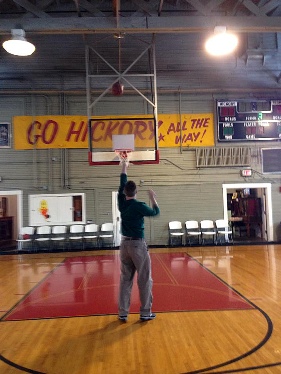From its humble start in a blacksmith shop at Jefferson Boulevard and Michigan Street, the company grew into the largest wagon manufacturer in the world and the only one to succeed in making automobiles.
Some may feel — 50 years after news of Studebaker’s closing broke Dec. 9, 1963 — that locals still talk too much about the company.
But Carlton said people in South Bend should talk about Studebaker, not as a source of sadness but as a source of inspiration.
Studebaker is a great American success story, and it’s a South Bend story.
“It grew to be the largest vehicle manufacturer in the world,” Carlton said, “and it was completely homegrown in South Bend.”
The fundamentals that made it great are still in our town today, he said.
Honoring and learning from Studebaker’s legacy, without being weighed down by nostalgia, has been South Bend’s challenge during the past five decades.
Kevin Smith, who owns Union Station Technology Center, said too many people stopped believing in the city in the years after the automaker closed.
“We moved forward in the darkness, so to speak,” he said.
Now Smith’s hoping to rekindle the type of innovative energy that drove Studebaker for decades.
“You have to have visionary people. Vision spurs innovation, innovation becomes entrepreneurial. Then you have businesses, and that is the crux of why a community exists,” he said. “That’s what formed South Bend.”
Smith owns the last large Studebaker production building still standing in the city.
The six-story Ivy Tower was built in 1923 along Lafayette Boulevard in an area Smith is calling The Renaissance District.
He plans to connect Ivy Tower with Union Station via a tunnel under the railroad tracks and fill the 800,000-square-foot building with a mix of data centers, technology offices and residential space.
Smith sees his project as building — literally and figuratively — on top of Studebaker’s innovation.
“That whole innovative culture that built South Bend needs to be rejuvenated, and we’re going to rejuvenate it,” he said. “If we want to be a vibrant city again, we have to go back to our roots.”
‘Death in the family’
Patricia Ann Graham remembers Dec. 9, 1963.
Studebaker workers shuffled into the company’s benefits department, where she was a clerk, to fill out pension applications.
“I actually saw some of them cry,” she told The Tribune recently, “and it was all I could do to keep from crying with them.”
Sue Ann Ciesiolka, whose father was a Studebaker test driver in the 1940s and ’50s, used an analogy many have relied upon to describe their grief at the automaker ending its operations here. Production ended Dec. 20.
“When Studebaker’s closed,” she said, “it felt like a death in the family to me.”
The roughly 7,000 people Studebaker employed in South Bend accounted for 8 percent of St. Joseph County’s total employment. The average Studebaker worker was 54; 60 percent had relatives who worked for the company. It was difficult for older employees to say goodbye to the company where many had worked their entire adult lives and built their best friendships.
It also was difficult for many residents to imagine South Bend without the company, which was not just important to the local economy but a big part of the city’s identity. Studebaker started making wagons here in 1852 — 13 years before South Bend was incorporated — and the city grew up as the company became a mighty manufacturer.



 Historically, America has been a remarkable nation, filled with bright, innovative and incredibly noble people.
Historically, America has been a remarkable nation, filled with bright, innovative and incredibly noble people. My lovely girlfriend surprised me with an hour-long shoot around at the
My lovely girlfriend surprised me with an hour-long shoot around at the 
 December 20 marked 50 years since the Studebaker Corporation left South Bend. Our friends at Inside INdiana Business
December 20 marked 50 years since the Studebaker Corporation left South Bend. Our friends at Inside INdiana Business  I’d like to start this post by relaying that I am a proud member of the
I’d like to start this post by relaying that I am a proud member of the  If you haven’t been to the
If you haven’t been to the  Our annual
Our annual  This headline quotes from The Medical Record, circa 1884, lamenting how the “chief characteristics of modern business (is) to be always in a hurry.”
This headline quotes from The Medical Record, circa 1884, lamenting how the “chief characteristics of modern business (is) to be always in a hurry.”